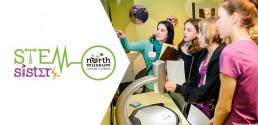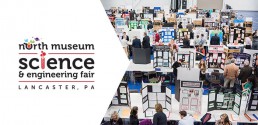Citizen Science
Citizen Science at the North Museum of Nature and Science
Citizen Science is the collection and analysis of data relating to the natural world by members of the general public, typically as part of a collaborative project with professional scientists.
The North Museum provides an opportunity for people to engage in a local Citizen Science Project. This project provides a format for students and Museum visitors to research, observe, collect, and upload data from nature by observing plant behavior during various times of the year. This study of science is called Phenology: the area of science focused on the timing of life phases for all organisms. Our theme focuses on plant Phenology.
Relating the natural world to science, technology, engineering, and math is an underutilized sustainable approach to learning from nature’s strategies to solve problems. By providing scientific data, this project will help us understand how plants are responding to the seasons and long-term changes in climate.
For Information on
HOW TO GET INVOLVED
Molly Wolanski, Collections and Exhibitions Manager
The study of plant Phenology – the timing of periodic events, such as leaf budburst and flowering – has fascinated naturalists and ecologists for centuries. In the 1800s, Henry David Thoreau kept dozens of notebooks on the flowering of herbs and forbs in Concord, Massachusetts (Miller‐Rushing and Primack 2008), whereas – during the early 1900s – John Muir described the Phenology of pines in California’s Yosemite Valley (Muir 1917). In the years since, research has shown that the timing of these events is adaptive (Volis 2007), limits species ranges (Chuine and Beaubien 2001), and plays a major role in species coexistence (Fargione and Tilman 2005). Plant Phenology has received increasing attention in recent decades, because it is a major indicator of climate change (Fitter and Fitter 2002; Cleland et al. 2007; Sherry et al. 2007), promoting the development of new, geographically extensive databases (Morisette et al. 2009), in addition to previously available long‐term records (Menzel 2005).
The National Citizen Science Project Bud Burst was chosen because it has students going outside and researching, observing, collecting, and uploading data from nature. We provide an overview and demonstrate how to collect and observe information to educators and students. We have also identified 13 species of plants on campus to monitor utilizing the expertise of the Master Arborist on staff at F&M. As we collect information it helps us better understand short and long-term changes in climate while providing equitable access and fun, hands on experiences within STEM learning.
Project Bud Burst has thrived on a partnership model in educational and scientific efforts. It works with agencies such as the U.S. Fish and Wildlife Refuge System, the U.S. National Park System, science centers, and natural history museums to identify plants of unique, local interest. Data gathered by the project is freely available for scientists and citizens to use. The result is a robust nationwide citizen science program—one in which anyone can step into Thoreau’s or Marsham’s shoes.
Locally the North Museum of Nature and Science has collaborated with the Lancaster County Conservancy who has been extraordinary in providing guidance. The Museum is also collaborating with Franklin & Marshall College and Elanco School District who have shared best practices as well as the Chicago Botanic Gardens, the Department of Conservation and Natural Resources and local school districts (public and private).
North Museum Science & Engineering Fair
Support innovative student scientists who are changing the world.


